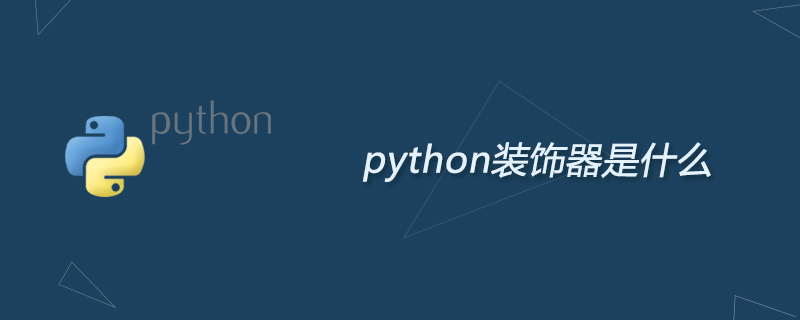

First of all, what is a decorator?
The more official explanation is:
A decorator is a callable object used to manage and call functions and classes, which means it is divided into function decorators and class decorators.
I have simplified this definition function a bit, otherwise it will be even harder to understand. In fact, I have a more general sentence that can explain the decorator:
The decorator is to decorate the object. (Function, class) is refactored, and it can execute the refactored behavior when calling the object without changing the original object
You may be confused here and cannot understand
It doesn’t matter, let’s take our time! ! !
First of all, you must know the syntax of decorator
def decorator(f):
def wrapper(x,y):
return x+y
return wrapper
@decorator
def func(x,y):
return 1
func(3,4)Then, look at this code, you may have a few questions based on the above:
1. What is decorator? mean?
2. What is the behavior of refactoring here?
3. What is the entire decoration behavior or process like?
Let's look at the above code. Obviously, we said that the decorator is a callable object. This is no problem. The above decorator is a function.
What is the behavior of refactoring?
The refactoring behavior of the above code is to replace the execution code of func with the execution code of wrapper. That is to say, the final input of the code is 7 instead of 1.
In fact, the above two questions are nonsense. After we solved the third question, we naturally understood it!
Okay, before we continue reading, let’s remember one sentence:
The decorator itself accepts the decorated object, and the callable object returned by the decorator accepts all parameters of the decorated object
Be sure to read this sentence carefully, understand it and remember it!
In the above code
The decorator is: decorator
The callable object returned is: wrapper
The decorated object is: func
Okay, you have to do this first and take a look at the execution process of this function
Of course, you will still have a question at this time:
When calling func What happened at (3,4)?
At this time: the returned callable object (wrapper) is given to func. You can also understand that the current code of func is
def func(x,y):
return x+yAt this time, func is not defined by itself at all. func, has it been reconstructed in a sense?
At this point, do you understand what a decorator is? You should!
But we are not over yet, because I want you to thoroughly understand what a decorator is!
We said before that there are not only function decorators, but also class decorators. Then let’s take a look at how class decorators work. I still want to post the previous paragraph here. Don't forget it!
The decorator itself accepts the decorated object, and the callable object returned by the decorator accepts all parameters of the decorated object
class Decorator:
def __init__(self,f):
self.func = f
def __call__(self,x,y):
return self.func(x,y) + 1
@Decorator
def func(x,y):
return x+y
func(3,4)
# 你来想想这时候的结果是什么?Let’s analyze it step by step,
First of all, we say that the decorator only accepts the decorated object as a parameter, which means that at this time, there are ?
If you can think of it, you basically understand what a decorator is!
Related recommendations: "
Python Tutorial"
The above is the detailed content of What is a python decorator?. For more information, please follow other related articles on the PHP Chinese website!